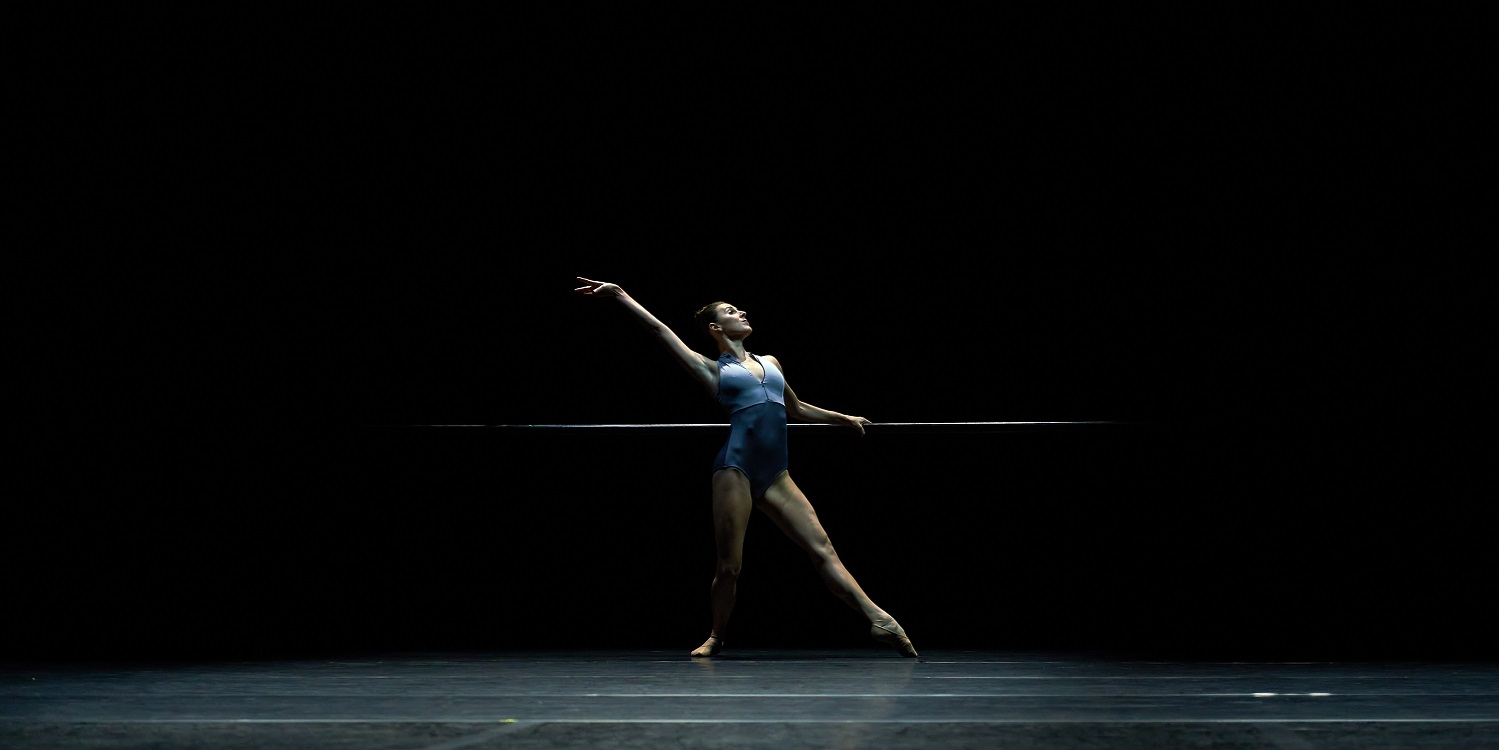Everything that Tiler Peck presented last weekend at City Center, as dancer, choreographer, and curator, was a first of one sort or another, two New York premieres, one live premiere, and a world premiere. She is brilliant, and the achievement was exhilarating.
The world premiere of Time Spell was the crowd-pleaser, a mad mix-and-match of ballet and tap. It felt like freedom. Described as “intersections of isolations and community, longing and joy,” it expressed the joy of performers emerging from the pandemic confinement. And it embodied “subdivisions of time and space,” suggesting both the aesthetic of the choreography and how, despite isolation and longing, the categories that separate us can be collapsed. Choreographed by Peck, Michelle Dorrance, and Jillian Meyers for eleven dancers (including themselves) and two live musicians, Time Spell worked a delirious magic that might never have ended; that no one wanted it to brought the audience to its feet once the dancers were done with theirs. In the ensuing intermission, the urge to move it created was given a natural outlet.
Peck choreographed one of the New York premieres and danced in the other. I had seen Thousandth Orange streamed from the Vail Dance Festival. Seeing her choreography live—and perhaps more thoroughly developed—changed my view of it. Virtual, it seemed tentative; before my eyes, fully conceived. Honed on Balanchine at the NYCB, Peck is unsurprisingly adept at “making music visible,” and Thousandth Orange did so in color and form, symmetries counterpointing individuation as Isabella Boylston, India Bradley, Herman Cornejo, Jovani Furlah, Christopher Grant, and Lauren Lovette moved in paired response to the Bergamot Quartet playing Carolyn Shaw’s live score.
Alonzo King’s Swift Arrow premiered at the Kennedy Center. In New York, it had the effect of throwing into relief what makes the subject of the program special as a dancer. A thousand particulars converge in an ineffable whole: the expansive musicality, the nailing of the heels (full weight momentarily followed by the lightness of a cloud), the instantly recognizable profile (stark as a line drawing), the surety of her backward walk, the generous partnering with Roman Mejia.
I would go back for the rest of it, but it was the live premiere that drew me to the show. I saw William Forsythe’s The Barre Project, Blake Works II as a virtual work during the pandemic. I think it was conceived for her. Be that as it may, it may as well have been, and it is a masterpiece that can still be seen on Marquee TV. It is fundamentally a dialogue between Peck and barre, the sole set piece, that supports, shapes, enables; engages feet, legs, hands; must be moved from and to. The dancers Lex Ishimoto, Brooklyn Mack, and Mejia and the James Blake music mediate the conversation.
The Barre Project depends on the complex musicality of a Peck, not just a capacity for rapid rhythmic fits, but her full comprehension of music in time, particularly the silences, which she understands are not pauses but continuations; not even silences, but another sort of sound. And sound, of course, is refracted in shape; no one is more striking in the shift of weight from one hip to the other, the line alters sinuously, not abruptly, no matter how quickly; where once was the curve of a violin there is the slope of a cello. Space, time, gravity; in this piece that plays to her, she masters them all.
Artists at the Center: Tiler Peck played March 4-6 at New York City Center. Click for upcoming events.
